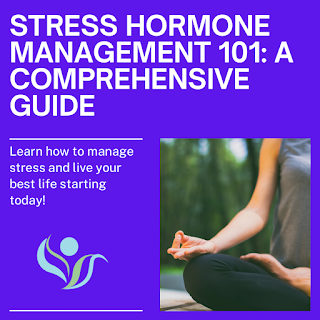Perimenopause vs Hormonal Imbalances
In our clinic, we often see women in their late 30s and early 40s who have been told by their physician that they are in perimenopause. Unfortunately, many of these women are actually experiencing hormonal imbalances linked to stress, nutritional imbalances, toxic exposure and other factors, which can look like perimenopause.
Let's first explore the definition of perimenopause. According to the Mayo Clinic, "Perimenopause means "around menopause" and refers to the time during which your body makes the natural transition to menopause, marking the end of the reproductive years." Symptoms of perimenopause may involve sweats, hot flashes, weight gain and mood changes to name a few. While it's not impossible for someone to go into early menopause (before the age of 45), underlying imbalances may terminate menses much earlier than necessary, putting them at risk for other hormonal imbalances, bone density issues and increased inflammation.
For those experiencing symptoms of perimenopause, it's important to seek a healthcare provider who is well versed in women's health issues and hormonal imbalances. Here are some key considerations:
- Age of menopause in the immediate family
- Symptoms - night sweats, hot flashes, irregular cycles, cyclical depression and mood swings
- Exposure to xenoestrogens which mimic estrogen and can impact metabolism and clearance. Synthetic xenoestrogens are often found in plastics, skin care products (parabens), and pesticides on food. Natural xenoestrogens may be found in plant foods and fungi.
- Stress levels - elevated cortisol can actually blunt hormone production leading to irregularities in the cycle and menopausal symptoms.
There are a few useful tests that your healthcare provider can run to get a better understanding of your specific hormone levels as well as hormone clearance.
- Serum Hormone Panel: blood test for estrogen, progesterone and other hormones.
- DUTCH test: used to identify hormone and hormone metabolites along with methylation and detoxification pathways.
- Organic Acid Test: used to assess general fungal and bacterial exposure along with neurotransmitter and mitrochontrial health.
- Mycotoxins test: used to assess specific mycotoxin exposure.
- Environmental toxins panel: assesses current exposure to harmful toxins
There are a number of herbs and foods that can help improve hormonal balance once you know which hormones need support. However, before you add these into your routine, best to check with a practitioner first.
At Sage Integrative Health, we work with patients to uncover the root cause of hormonal imbalances through testing and an in-depth intake. Our functional medicine approach uses a blend of nutritional changes, lifestyle modifications, herbal medicine and supplements to bring the body back into harmony.
To learn more, visit us online at https://www.sageintegrativehealth.com/.
By: Dr. Wendy Romig
References:



Comments
Post a Comment